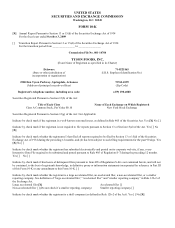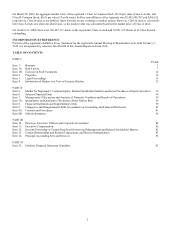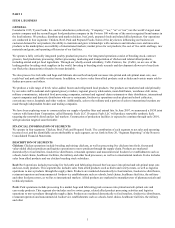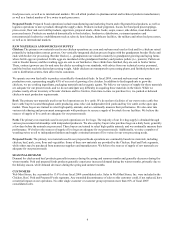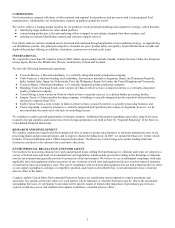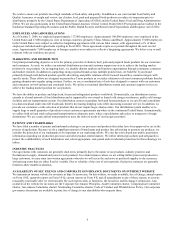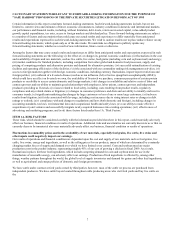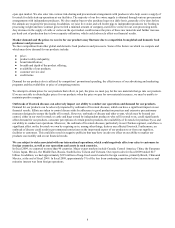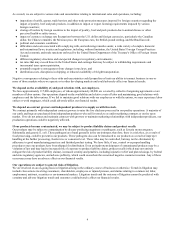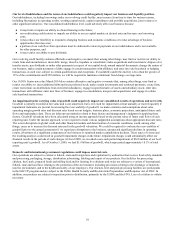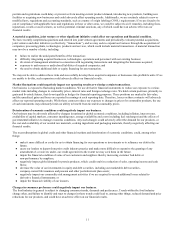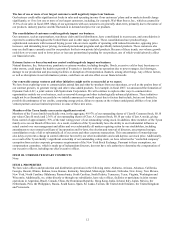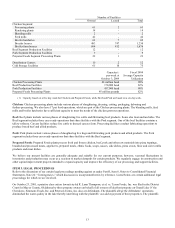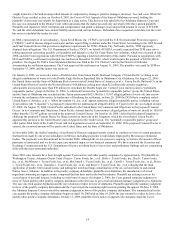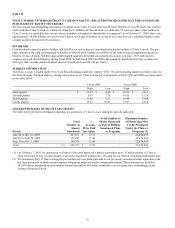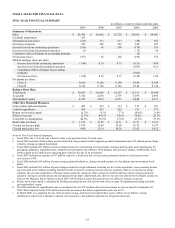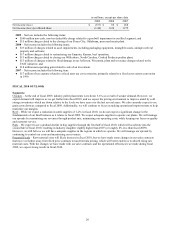Tyson Foods 2009 Annual Report Download - page 10
Download and view the complete annual report
Please find page 10 of the 2009 Tyson Foods annual report below. You can navigate through the pages in the report by either clicking on the pages listed below, or by using the keyword search tool below to find specific information within the annual report.10
Our level of indebtedness and the terms of our indebtedness could negatively impact our business and liquidity position.
Our indebtedness, including borrowings under our revolving credit facility, may increase from time to time for various reasons,
including fluctuations in operating results, working capital needs, capital expenditures and possible acquisitions, joint ventures or
other significant initiatives. Our consolidated indebtedness level could adversely affect our business because:
●
it may limit or impair our ability to obtain financing in the future;
●
our credit rating could restrict or impede our ability to access capital markets at desired rates and increase our borrowing
costs;
●
it may reduce our flexibility to respond to changing business and economic conditions or to take advantage of business
opportunities that may arise;
●
a portion of our cash flow from operations must be dedicated to interest payments on our indebtedness and is not available
for other purposes; and
●
it may restrict our ability to pay dividends.
Our revolving credit facility contains affirmative and negative covenants that, among other things, may limit or restrict our ability to:
create liens and encumbrances; incur debt; merge, dissolve, liquidate or consolidate; make acquisitions and investments; dispose of or
transfer assets; pay dividends or make other payments in respect of our capital stock; amend material documents; change the nature of
our business; make certain payments of debt; engage in certain transactions with affiliates; and enter into sale/leaseback or hedging
transactions, in each case, subject to certain qualifications and exceptions. If availability under this facility is less than the greater of
15% of the commitments and $150 million, we will be required to maintain a minimum fixed charge coverage ratio.
Our 10.50% Senior notes due March 2014 also contain affirmative and negative covenants that, among other things, may limit or
restrict our ability to: incur additional debt and issue preferred stock; make certain investments and restricted payments; create liens;
create restrictions on distributions from restricted subsidiaries; engage in specified sales of assets and subsidiary stock; enter into
transactions with affiliates; enter new lines of business; engage in consolidation, mergers and acquisitions; and engage in certain
sale/leaseback transactions.
An impairment in the carrying value of goodwill could negatively impact our consolidated results of operations and net worth.
Goodwill is initially recorded at fair value and is not amortized, but is reviewed for impairment at least annually or more frequently if
impairment indicators are present. In assessing the recoverability of goodwill, we make estimates and assumptions about sales,
operating margin growth rates and discount rates based on our budgets, business plans, economic projections, anticipated future cash
flows and marketplace data. There are inherent uncertainties related to these factors and management’s judgment in applying these
factors. Goodwill valuations have been calculated using an income approach based on the present value of future cash flows of each
reporting unit. Under the income approach, we are required to make various judgmental assumptions about appropriate discount rates.
The recent disruptions in global credit and other financial markets and deterioration of economic conditions, could, among other
things, cause us to increase the discount rate used in the goodwill valuations. We could be required to evaluate the recoverability of
goodwill prior to the annual assessment if we experience disruptions to the business, unexpected significant declines in operating
results, divestiture of a significant component of our business or sustained market capitalization declines. These types of events and
the resulting analyses could result in goodwill impairment charges in the future. Impairment charges could substantially affect our
financial results in the periods of such charges. In fiscal 2009, we recorded a non-cash partial impairment of $560 million of our beef
reporting unit’s goodwill. As of October 3, 2009, we had $1.9 billion of goodwill, which represented approximately 18.1% of total
assets.
Domestic and international government regulations could impose material costs.
Our operations are subject to extensive federal, state and foreign laws and regulations by authorities that oversee food safety standards
and processing, packaging, storage, distribution, advertising, labeling and export of our products. Our facilities for processing
chicken, beef, pork, prepared foods and milling feed and for housing live chickens and swine are subject to a variety of international,
federal, state and local laws relating to the protection of the environment, including provisions relating to the discharge of materials
into the environment, and to the health and safety of our employees. Our chicken, beef and pork processing facilities are participants
in the HACCP program and are subject to the Public Health Security and Bioterrorism Preparedness and Response Act of 2002. In
addition, our products are subject to inspection prior to distribution, primarily by the USDA and the FDA. Loss of or failure to obtain
necessary

